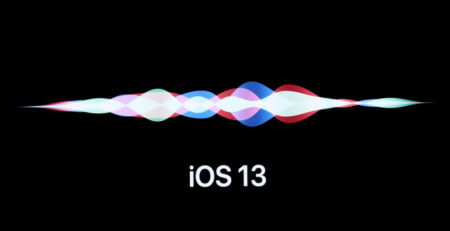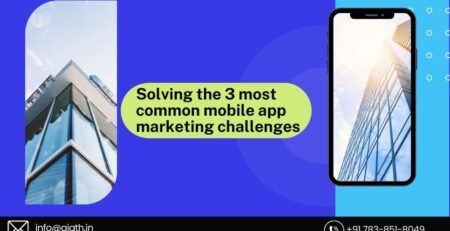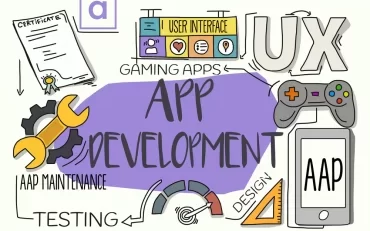How to Develop an IoT Project: 6 Efficient Steps
The Web of Things (IoT) has upset the manner in which we cooperate with the world, associating regular items to the web and empowering them to impart, gather and trade information. This innovation has tracked down applications in different enterprises, from medical services and farming to brilliant urban communities and assembling. On the off chance that you’re keen on developing an IoT project, whether for individual or business use, it’s fundamental to follow an organized way to deal with guarantee a good outcome. In this article, we’ll investigate six productive moves toward guide you through the most common way of developing an IoT project.
Stage 1: Characterize Your IoT Task Goals
Prior to plunging into the specialized parts of an IoT project, having an unmistakable comprehension of your task’s objectives is pivotal. You ought to respond to the accompanying inquiries:
- What issue will your IoT project address? Begin by recognizing the particular issue or challenge you need to address. Whether it’s streamlining energy utilization in your home or further developing harvest yield in horticulture, a distinct issue proclamation is the groundwork of your venture.
- What are your undertaking’s objectives? Lay out quantifiable objectives and key execution markers (KPIs) to assess the progress of your IoT arrangement. For example, on the off chance that you’re fabricating a shrewd home framework, your objectives could incorporate lessening energy utilization by 20% or upgrading security.
- Who is your ideal interest group? Decide the end-clients or recipients of your IoT arrangement. Understanding your crowd’s necessities and inclinations is fundamental for planning an easy to use and successful framework.
- What is your spending plan and timetable? IoT projects can shift in size and intricacy, so it’s crucial for set a financial plan and course of events that line up with your venture’s degree. This will assist you with pursuing informed choices all through the development interaction.
Stage 2: Select the Right IoT Equipment
Picking the suitable equipment is a pivotal move toward IoT project development. The equipment you select will rely upon the particular prerequisites of your undertaking. Think about the accompanying elements:
- Sensors and Actuators: Decide the kinds of sensors and actuators you want to gather information and follow up on it. For instance, on the off chance that you’re making a weather condition observing framework, you could require temperature, moistness, and wind speed sensors.
- Connectivity Options: Select the right connectivity technology based on your project’s needs. Common options include Wi-Fi, Bluetooth, Zigbee, LoRa, and cellular networks. The choice of connectivity will influence the range and data transfer capabilities of your IoT devices.
- Microcontrollers or Single-board Computers: Choose the appropriate hardware platform to control your sensors and actuators. Popular choices include Raspberry Pi, Arduino, and various microcontroller platforms like ESP8266 or ESP32.
- Power Supply: Consider how your IoT devices will be powered. Depending on your project’s location and duration, you may use batteries, solar panels, or a continuous power source.
- Walled in areas and Lodging: Safeguard your equipment from ecological variables like residue, dampness, and temperature changes. Fenced in areas ought to be chosen to guarantee the life span and unwavering quality of your IoT gadgets.
- Versatility: Ponder future adaptability and how simple it will be to add more gadgets to your IoT network as your task develops.
Step 3: Develop the IoT Software
The product layer of your IoT project is where you make the insight and usefulness. Here are key contemplations for developing the IoT programming:
- Information Handling and Examination: Choose where information handling will happen. You can decide to handle information locally on the IoT gadget, on a passage, or in the cloud. The decision will rely upon the handling prerequisites and inactivity resistance of your task.
- Programming Language and Structures: Select the programming language and development system that best suits your task. Normal dialects for IoT development incorporate Python, C/C++, and JavaScript. Structures like TensorFlow or Hub RED can work on development.
- IoT Stages: Think about utilizing an IoT stage like AWS IoT, Microsoft Purplish blue IoT, or Google Cloud IoT to oversee gadget availability, information capacity, and examination. These stages can fundamentally smooth out development and arrangement.
- Security: Execute vigorous safety efforts to safeguard your IoT gadgets and information. Use encryption, secure correspondence conventions, and verification techniques to defend your task from possible dangers.
- UI: On the off chance that your IoT project includes client communication, plan an easy to use interface. This can be a web application, portable application, or even voice orders, contingent upon your main interest group and gadget capacities.
Stage 4: Availability and Systems administration
Interfacing IoT gadgets to the web and to one another is a crucial part of IoT project development. Here are the means in question:
- Network Design: Design your gadgets to interface with your picked network, whether it’s a nearby Wi-Fi organization, a cell organization, or a long-range network like LoRa. Guarantee that your gadgets can convey dependably.
- Information Transmission Conventions: Pick the fitting information transmission convention. MQTT and CoAP are normal decisions for lightweight, proficient correspondence. For additional intricate situations, you could utilize HTTP or WebSockets.
- Door Gadgets: In bigger scope IoT projects, entryway gadgets can be utilized to gather information from different sensors and transfer it to the cloud. Doors assume a pivotal part in broadening the scope of your IoT organization.
- Cloud Incorporation: Lay out an association with the cloud or an IoT stage to store, make due, and break down the information gathered from your gadgets. This is where you can use the adaptability and handling force of cloud administrations.
Stage 5: Information Assortment and Investigation
Information is the backbone of IoT projects. Gathering and dissecting information is fundamental for acquiring bits of knowledge, pursuing informed choices, and accomplishing the undertaking’s objectives. This is the way to really make it happen:
- Data Collection: Ensure that your sensors and devices are collecting data accurately and consistently. Implement error-checking mechanisms and redundancy to minimize data loss.
- Data Storage: Choose a data storage solution that aligns with your project’s requirements. This can range from on-device storage, edge storage, to cloud-based databases like Amazon DynamoDB, Google Bigtable, or Microsoft Azure Cosmos DB.
- Constant Investigation: Execute continuous examination to process and envision information as it’s gathered. Instruments like Apache Kafka, Apache Flash, and Grafana can assist with continuous information examination and perception.
- Prescient Investigation: For further developed projects, consider executing AI and man-made intelligence calculations to anticipate future occasions or peculiarities in view of authentic information.
Stage 6: Testing, Organization, and Support
The last move toward developing an IoT project is to test your answer, convey it, and plan for progressing support:
- Testing: Completely test your IoT gadgets and programming under different circumstances to guarantee they capability true to form. Consider factors, for example, information precision, reaction times, and versatility.
- Deployment: Deploy your IoT solution in the real-world environment where it will be used. This may involve installing devices, configuring network settings, and connecting to the cloud or gateway.
- Monitoring and Maintenance: Implement continuous monitoring to detect and address any issues or anomalies. Regularly update the software and firmware to address security vulnerabilities and improve functionality.
- Scalability: Be prepared to scale your IoT project as needed. This might involve adding more devices, optimizing network infrastructure, or upgrading cloud resources.
- User Training and Support: If your project involves end-users, provide training and support to ensure they can effectively use the IoT solution. Create documentation and user guides to assist them.
- Consistence and Guidelines: Know about any lawful and administrative necessities that apply to your IoT project, particularly in businesses like medical care, money, and transportation. Guarantee that your answer agrees with information protection and security guidelines.
All in all, developing an IoT project includes an organized methodology that envelops characterizing targets, choosing the right equipment and programming parts, guaranteeing network and systems administration, gathering and examining information, and testing, conveying, and keeping up with the arrangement. By following these productive advances, you can make an effective IoT project that resolves explicit issues and conveys worth to your ideal interest group. Recall that IoT innovation is constantly advancing, so remaining refreshed with the most recent developments and patterns is fundamental for progressing outcome in this field.













Leave a Reply